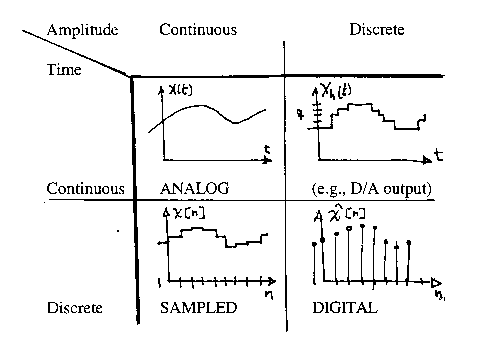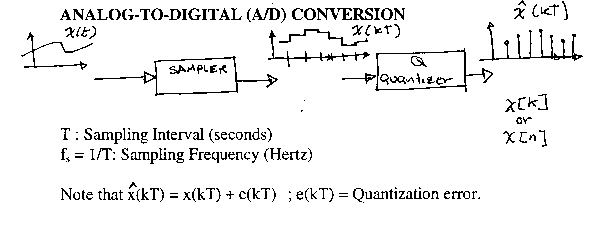Why Digital Signal Processing (DSP) in biomedical applications?
Why digital signal processing (DSP) in biomedical applications?
* Signals
- Easier Permanent Storage
- Higher Speed of transmission
- Standard storage/transmission for images, time series, text, etc...
* Systems
- Low cost of microprocessors, microcomputers, storage devices
- Easily re-configurable, programmable,
- Easier modular development (standard data transfer protocols)
General Signal Classification:
Deterministic: Each value uniquely specified by math expression
a: Periodic: Completely describe by a single finite period
* Can be expressed as sum of sine waves.
b: Finite-duration: Specified only in finite time interval
c: Transient: Non-Zero only in finite interval. Constant elsewhere
d: Almost-Periodic: Composed of sinusoids not harmonically related.
Non-Deterministic: Not completely predictable. Described by averages, standard deviations and other statistical properties.
Continuos / Discrete Classification of Signals (in time)

Analog-To-Digital (A/D) conversion:

T: Sampling Interval (seconds)
Fs = 1/T: Sampling Frequency (Hertz)
Note that x(kT) = x(kT) + e(kT) ; e(kT) = Quantization error.
| Previous: Introduction to DSP | Next: Sampling Theorem (Nyquist Theorem) |